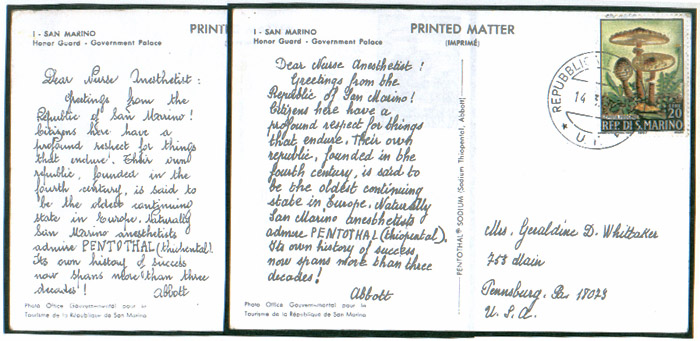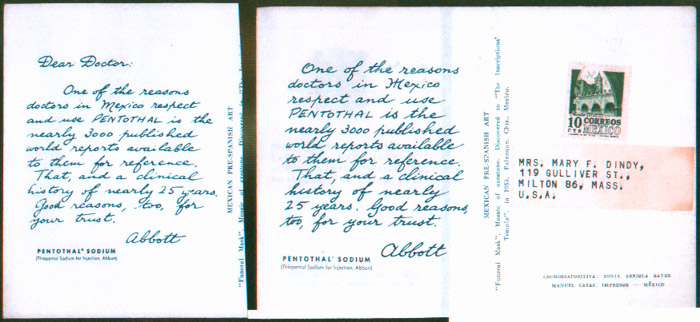
Figure 1. San Marino “Honor Guard – Government Palace” Same-Picture Cards (#144).
Same message from Abbott, but in different script typefaces.
by Roger S. Cichorz, August 30, 2009
This is the first report of two different typefaces on an identical same-picture Abbott Pentothal card with the same English-language text message. There may be additional Abbott Pentothal cards of this nature, and readers are urged to examine their duplicate cards and report any other instances of same-picture cards with different typefaces.
I was aware of the fact that the “B.W. & Co.” (Burroughs Wellcome & Co.) and Poulenc “Dear Doctor” advertising postcards have different simulated-handwritten script typefaces on the English-text message sides of the same-picture cards. In fact, some same-picture cards from B.W. & Co. not only have different script typefaces but even have different English-text messages depending upon which of its drugs is being advertised. However, until now, I was under the impression that each English-text, Pentothal-message card from Abbott was printed in a singular typeface (primarily simulated-handwritten script or, in a few instances, typewriter-simulated type) unique to the particular card.

I recently purchased an example of the San Marino “Honor Guard – Government Palace” card (#144 on Tom Fortunato’s checklist) at an area postcard show. When I returned home and went to place it into my collection of Abbott cards, I was surprised to see that it had an entirely different text typeface than the other #144 in my collection. The card I purchased at the show is a “Dear Nurse Anesthetist” card, postmarked March 4, 1968, and addressed to Denver, Colo. The card that was already in my collection is also a “Dear Nurse Anesthetist” card, postmarked March 4, 1968, but addressed to Tennsburg, Pa. The text of the message from Abbott is identical on both cards, but as you can see from the illustrations (Figure 1), the simulated handwritten typeface is entirely different for each card! In this and the following report, I use the term “typeface” loosely to describe the script printing as the Abbott messages were probably initially handwritten and then subsequently printed onto the cards by an electrotype or other duplicating printing process, rather than set with actual script type.

Another card in my collection shows two different simulated handwritten text messages for the same-picture English-text postcard: the Mexico “Funeral Mask Mosaic of axestone” card (#105) (Figure 2). In this instance, the script typeface of the “Dear Doctor” version differs from the card without a salutation (addressed to nurse anesthetists), so technically these may be classified as two different cards. However, the text typefaces of all the other nurse-anesthetist versions in my collection do not differ substantially from their same-picture counterparts with the “Dear Doctor” salutations.